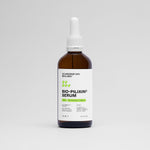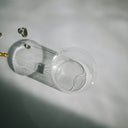Hair bleaching is a popular cosmetic procedure that many people use to change their hair color dramatically. While it can create stunning looks, it also raises concerns about hair health, particularly the potential for hair loss. Understanding the relationship between bleaching and hair loss is crucial for anyone considering this treatment. This article will delve into whether bleaching causes hair loss and explore the factors that contribute to hair health.
Table of content
Does bleaching cause hair loss?
Yes, bleaching can lead to hair loss, but it is not a direct cause for everyone. The hair bleaching process involves the use of strong chemicals, primarily hydrogen peroxide and ammonia, which can weaken the hair structure. When hair is bleached, the cuticle, which is the outer layer of the hair, can become damaged, leading to increased fragility and breakage. This damage can manifest as thinning hair or increased hair fall, especially if the bleaching is done frequently or incorrectly.
However, it is essential to note that hair loss due to bleaching is often a result of improper techniques, lack of adequate aftercare, or underlying hair health issues rather than bleaching itself. For instance, over-processing the hair, using high concentrations of bleach, or neglecting to use protective products can exacerbate damage and lead to hair loss. Additionally, individuals with pre-existing hair conditions may be more susceptible to damage from bleaching.
To better understand the impact of bleaching on hair health, it is crucial to consider the following factors:
As your leading source for hair health information over the past 4 years, we never compromise on accuracy. When it comes to your health, you deserve information you can truly rely on - and earning your trust is our top priority.
Here's how Scandinavian Biolabs ensures every piece of content meets the highest standards of accuracy and integrity:
- Credentialed Experts: Our reviewers are actively practicing doctors and medical researchers
- Stringent Reviews: Content undergoes rigorous editing by subject specialists and review by a practicing doctor.
- Evidence-Based: We rely on well-established research from trusted scientific sources like peer-reviewed journals and health authorities.
- Full Transparency: Our editorial standards, writer credentials, reviewer credentials, correction process, and funding are all publicly documented.
- Independent Voice: While we do promote products, we operate in a vacuum to business operations. Our main goal is just an unwavering commitment to providing medically-sound guidance.
You can count on Scandinavian Biolabs to consistently deliver the trustworthy health information you deserve. Read our Editorial Standards.
How does bleaching affect hair structure?
The bleaching process alters the natural pigment of the hair by breaking down melanin. This chemical reaction can make the hair shaft more porous, which means the hair loses moisture and becomes more prone to damage. The structural integrity of the hair can be compromised, leading to issues such as:
- Dryness: Bleaching can strip the hair of natural oils, resulting in dry, brittle strands.
- Breakage: Weakened hair is more likely to break, especially if subjected to heat styling or harsh treatments.
- Split Ends: The compromised cuticle can lead to split ends, further contributing to the appearance of thinning hair.
Can hair loss be prevented after bleaching?
While it may not be possible to eliminate all risks associated with hair bleaching, there are several strategies to minimize hair damage and potential loss:
- Consult a Professional: Always seek the expertise of a licensed stylist who understands the nuances of hair health and bleaching techniques.
- Choose Quality Products: Use high-quality bleaching products that are less damaging and designed to protect hair integrity.
- Deep Conditioning: Incorporate deep conditioning treatments into your hair care routine to restore moisture and elasticity.
- Limit Frequency: Avoid frequent bleaching sessions; allow time for your hair to recover between treatments.
- Use Heat Sparingly: Minimize the use of heat styling tools, which can exacerbate damage.
What are the signs of damage from bleaching?
Recognizing the signs of damage is crucial for timely intervention. Common indicators of bleach-related damage include:
- Excessive Shedding: Noticing more hair in your brush or shower drain can indicate underlying issues.
- Frizz and Flyaways: Increased frizz and flyaways may signal that your hair is becoming damaged and needs care.
- Lack of Shine: Dull, lifeless hair can indicate that the cuticle is damaged and needs nourishment.
What to do if you experience hair loss after bleaching?
If you notice significant hair loss or damage post-bleaching, consider the following steps:
- Visit a Specialist: A trichologist or dermatologist can assess your hair and scalp health and recommend appropriate treatments.
- Revise Hair Care Routine: Adjust your hair care practices to include more nourishing and repairing products.
- Be Patient: Hair growth takes time; ensure you are providing your hair with the right nutrients to encourage healthy regrowth.
Conclusion
In conclusion, while bleaching can lead to hair loss, it is not an inevitable outcome for everyone. The degree to which hair is affected depends on various factors, including the method of bleaching, the condition of the hair before treatment, and the aftercare routine employed. By taking the necessary precautions and caring for your hair appropriately, you can minimize the risks associated with bleaching while still enjoying beautiful, vibrant color.
Tired of Thinning Hair? Try a Clinically Tested Serum.
Looking for a natural way to regrow hair and achieve a thicker, fuller head of hair? Ditch the stinging nettle for hair loss – Bio-Pilixin Serum is a drug-free hair activation serum that delivers clinically tested results.
Here's why Bio-Pilixin is superior:
- Clinically Tested Results: 93% of users saw a reduction in hair loss, and 73% experienced increased hair density.
- Safe and Natural: Unlike harsh chemicals, Bio-Pilixin uses plant growth factors derived from stem cell technology to nourish hair follicles and stimulate growth.
- Fast-Acting: See visible results in as little as 45 days (most typically see results within 150 days).
Stop wasting time on unproven remedies. Bio-Pilixin is the safe, natural serum you've been searching for.
Read more:






